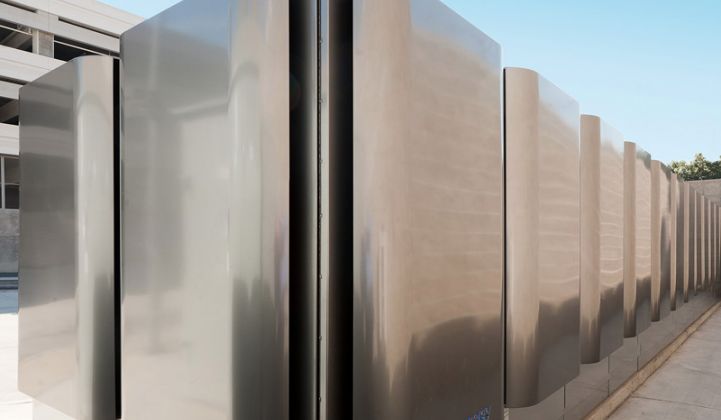Bloom Energy has set the terms for its upcoming initial public offering. The company is seeking to raise from $235 million to $270 million through the sale of 18 million shares at a price of $13 to $15 per share.
The terms, revealed by the Sunnyvale, Calif.-based fuel cell maker on Monday, would put its midpoint valuation at about $1.6 billion — just about level with the amount of equity investment it has raised since its founding, and roughly half its peak valuation set back in 2011.
Bloom filed its S-1 registration statement (PDF) with the U.S. Securities and Exchange Commission on June 12, finally pulling the trigger on an IPO that has been rumored for the company since 2016. The company plans to trade on the New York Stock Exchange under the ticker symbol BE.
But Bloom’s S-1 also unveiled hitherto unseen data about its financial status as one of Silicon Valley’s sole remaining clean technology “unicorns” — companies that have raised more than $1 billion in venture investment without going public or finding a buyer.
It revealed that Bloom has faced significant losses in the past two years ($263 million on revenues of $376 million in 2017, and $279.6 million on revenues of $208.5 million in 2016) and that it expects to “incur net losses on a GAAP basis for the foreseeable future.”
It also disclosed an accumulated deficit of $2.3 billion as of March 31, 2018, and shrinking cash reserves of $88 million at the end of March, with a burn rate of $37 million over the first quarter of 2018.
Bloom is also carrying $950.5 million of total consolidated debt, including $94.8 million in senior secured notes issued in June 2017 which come with certain “restrictive covenants” that could make it more difficult for Bloom to raise debt in the future.
Bloom’s hopes for an IPO in 2016 were shelved after Congress failed to include fuel cells on the list of technologies authorized to receive the federal tax credit also available to wind and solar power. That led to a $158 million hit to revenues in 2017 as the company cut prices and saw reduced business in the wake of the Investment Tax Credit’s expiration.
But in February, Congress retroactively restored the credits for fuel cells, providing a $43.9 million one-time product revenue benefit in the first quarter of 2018 and opening the door for Bloom's IPO.
Bloom is also offering 2.7 million shares to underwriters, which would boost the total raised by $40.5 million if fully executed at the top of its targets. Existing shareholders have also indicated interest to purchase up to $50 million of Class A shares of the fuel cell company.
Bloom has a long list of high-profile investors, including Kleiner Perkins, New Enterprise Associates, Advanced Equities, Goldman Sachs, DAG, GSV Capital, Apex Venture Partners, Mobius Venture Capital, Madrone Capital, The New Zealand Superannuation Fund and SunBridge Partners. Board members include John Doerr of KP, AOL founder Steve Case, and former U.S. Secretary of State Colin Powell.
But as former Greentech Media Editor-in-Chief Eric Wesoff was fond of saying, despite claims of impending profitability from fuel cell makers including Bloom, the number of profitable standalone fuel cell companies still stands at zero. Bloom’s S-1 makes clear that it does not intend to violate that dictum, at least for the “foreseeable future.”




